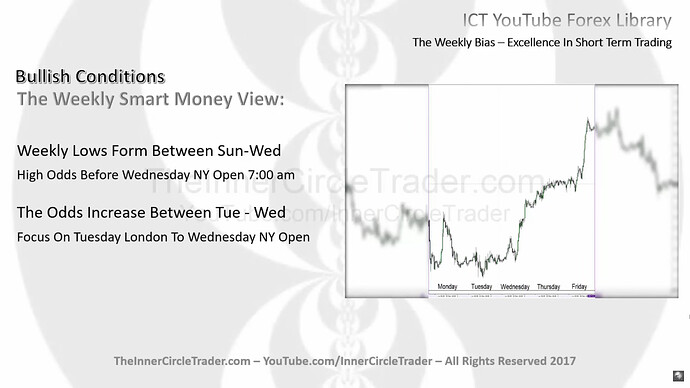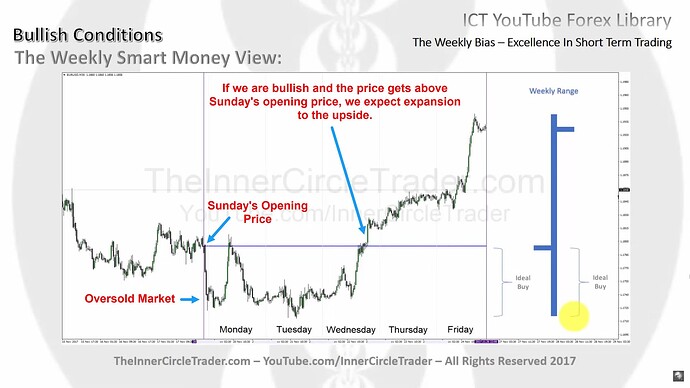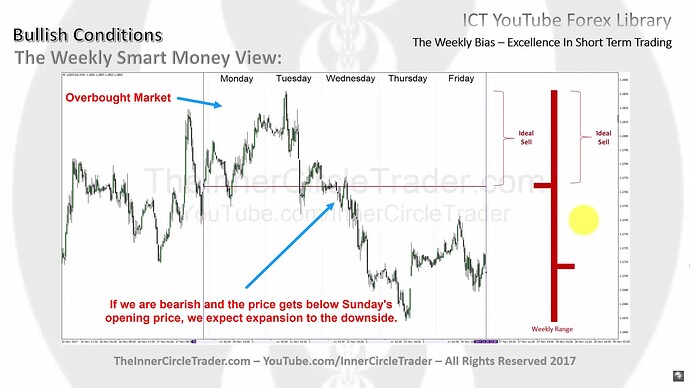Notes
- We look for the Judas swing, which is a false move against the main trend to grab liquidity.
- If we are bullish, we want to enter below Sunday’s opening price (Power Of Three ICT Concept).
- If we are bearish, we want to enter above Sunday’s opening price.
- We expect the high or low of the week to form on Tuesday or Wednesday.
- Sometimes, a high or low of the week is formed on Monday, but we can still enter a continuation trade on Tuesday or Wednesday.
- We expect the price to expand away from the opening price starting from Wednesday.
- Traders not monitoring intraday charts can use the weekly candle for short-term or swing trades.
- If we are bullish and cannot watch intraday charts, we will place a sell limit order 30 pips above Sunday’s opening price. If we are bearish, we will place a buy limit order 30 pips below Sunday’s opening price. Our stop loss is 150 pips, and our target is 150 to 300 pips.
- If the price has moved 100 pips in our favor, we should consider taking partial profits and adjusting stop-loss to break-even.
- Market behavior can change midweek. Hence, taking partial profits helps safeguard against reversals.
- Larger weekly ranges can occur during volatile periods or when significant news is expected.
- Using specific levels in price action can refine entries beyond just a set number of pips above or below Sunday’s opening price. For example, sell limit orders above recent highs can provide better entry points with reduced exposure.
The Weekly Bias - Bullish Conditions
The Weekly Bias - Bullish Conditions Example
The Weekly Bias - Bearish Conditions
The Weekly Bias - Bearish Conditions Example
Next lesson: ICT Forex - Market Maker Primer Course - Time & Price Theory
Previous lesson: ICT Forex - Market Maker Primer Course - The ICT London Close Killzone




